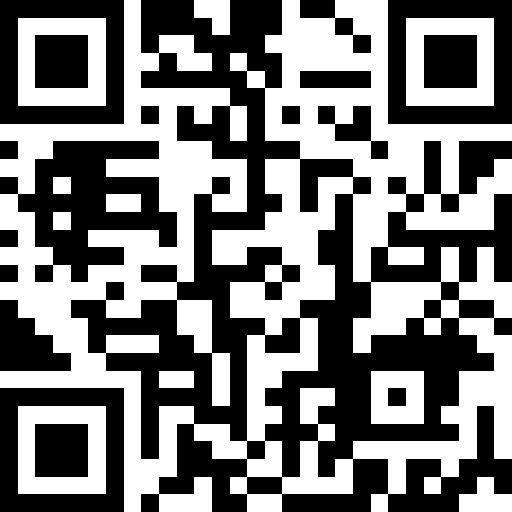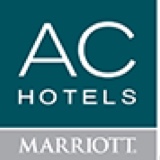Title Page
-
Site conducted
-
Conducted on
-
Prepared by
-
Location
Bars
Knowledge and Documentation
-
Managers certified by accredited food safety training program
-
Staff has basic food safety knowledge. Training and refreshing courses are conducted for all food handlers
-
Chemical training has been given and staff has knowledge on chemical handling
-
Food Allergens training has been received and staff are able to explain and demonstrates understanding
-
Temperature logs are available and completed with corrective actions and kept for one year
-
Forms are verified by supervisor/manager
-
Correct documentation - Ice machine Cleaning, Sanitiser Changing, Calibration, Cleaning records
Infrastructure
-
State of repair and cleanliness - Walls
-
State of repair and cleanliness - Floor
-
State of repair and cleanliness - Ceiling
-
State of repair and cleanliness - Light Fittings
-
State of repair and cleanliness - Other Infrastructure
Equipment and Utensils
-
State of repair and cleanliness - Cold storage units
-
State of repair and cleanliness - Shelves
-
State of repair and cleanliness - Mixers and Blenders
-
State of repair and cleanliness - Cutting boards, knives and scraper
-
State of repair and cleanliness - Tea pots, Cups and Glasses
-
State of repair and cleanliness - Coffee Machine
-
State of repair and cleanliness - Food Containers
-
State of repair and cleanliness - Ice machine
-
State of repair and cleanliness - Other equipment and utensils
Food Storage
-
Chilled storage below 5ºC
-
Frozen storage below minus 18ºC
-
Food protected from potential microbiological, physical and chemical hazards during storage
-
Storage Hierarchy
-
In-use utensils (including ice scoops) properly handled and stored in a sanitary manner
-
Glass should be stored at the bottom shelf
-
All food at least six inches of the floor
-
All food stored away from the wall
-
All stored food is free from supplier package (cardboard, Styrofoam, plastic) in food preparation or storage areas
-
Food correctly packed and covered
-
Food correctly labelled
-
First in first out / absence of expired food item
-
Suitable and differentiated equipment used for different products (i.e. Colour coding)
Food Preparation
-
Food protected from potential microbiological, physical and chemical hazards during preparation (no time temperature abuse)
-
Thermometer available and calibrated
-
Food is thawed using acceptable methods
-
Food correctly packed and covered
-
Vegetables/Fruits/Eggs are washed and sanitized prior to storage/ serving
Cleanliness and Sanitization
-
Hand wash basin in good working order and easily accessible
-
Hand washing commodities available (Soap, Paper Towels, Bin, Running Water)
-
Food grade sanitizers used and stored appropriately
-
Chemical containers clearly labelled and correct strength
-
Pedal operated disposal bins in operation; cleaned, lined and covered
-
3-compartment sink used properly
-
Test kits/ sanitizer strips available
-
Absence of wet, torn and dirty cloths, Wiping cloth used/stored correctly
-
Cleaning equipment should be stored of the floor, hanging on the wall and away from food prep areas and storage.
-
Proper disinfection of all food contact equipment
-
Pest free conditions
Equipment Storage
-
All equipment at least six inches of the floor
-
All equipment stored away from the wall
-
All stored equipment is free from supplier package (cardboard, Styrofoam, plastic) in wash up areas
-
Equipment protected from potential microbiological, physical and chemical hazards during storage and handling
-
Suitable and differentiated equipment used for different products (i.e., Colour coding)
Personal Hygiene and Habits
-
Appropriate and clean clothing, headwear and footwear
-
Finger nails neat, trimmed and without nail polish
-
Absence of jewelry, including watches, personal belongings and strong perfume
-
No evidence of eating, drinking, spitting, coughing or smoking
-
First Aid Kits - no expired products, no open packages of bandage, list of all products, water-poof Band-Aids
-
Gloves used and worn properly
-
Food handler can show correct steps of handwashing
-
Absence of bad working habits
Front Office
Knowledge and Documentation
-
Managers certified by accredited food safety training program
-
Staff has basic food safety knowledge. Training and refreshing courses are conducted for all food handlers
-
Chemical training has been given and staff has knowledge on chemical handling
-
Temperature logs are available and completed with corrective actions and kept for one year
-
Forms are verified by supervisor/manager
-
Correct documentation - Sanitiser Changing, Calibration, Cleaning records
Infrastructure
-
State of repair and cleanliness - Walls
-
State of repair and cleanliness - Floor
-
State of repair and cleanliness - Ceiling
-
State of repair and cleanliness - Light Fittings
-
State of repair and cleanliness - Other Infrastructure
Equipment and Utensils
-
State of repair and cleanliness - Shelves
-
State of repair and cleanliness - Cutting boards, knives and scraper
-
State of repair and cleanliness - Tea pots, Cups and Glasses
-
State of repair and cleanliness - Food Containers
-
State of repair and cleanliness - Other equipment and utensils
Food Storage
-
Chilled storage below 5ºC
-
Food protected from potential microbiological, physical and chemical hazards during storage
-
Storage Hierarchy
-
In-use utensils (including ice scoops) properly handled and stored in a sanitary manner
-
Glass should be stored at the bottom shelf
-
All food at least six inches of the floor
-
All food stored away from the wall
-
All stored food is free from supplier package (cardboard, Styrofoam, plastic) in food preparation or storage areas
-
Food correctly packed and covered
-
Food correctly labelled
-
First in first out / absence of expired food item
-
Suitable and differentiated equipment used for different products (i.e. Colour coding)
Food Preparation
-
Food protected from potential microbiological, physical and chemical hazards during preparation (no time temperature abuse)
-
Thermometer available and calibrated
-
Food correctly packed and covered
Cleanliness and Sanitization
-
Hand wash basin in good working order and easily accessible
-
Hand washing commodities available (Soap, Paper Towels, Bin, Running Water)
-
Food grade sanitizers used and stored appropriately
-
Chemical containers clearly labelled and correct strength
-
Pedal operated disposal bins in operation; cleaned, lined and covered
-
Test kits/ sanitizer strips available
-
Absence of wet, torn and dirty cloths, Wiping cloth used/stored correctly
-
Cleaning equipment should be stored of the floor, hanging on the wall and away from food prep areas and storage.
-
Proper disinfection of all food contact equipment
-
Pest free conditions
Equipment Storage
-
All equipment at least six inches of the floor
-
All equipment stored away from the wall
-
All stored equipment is free from supplier package (cardboard, Styrofoam, plastic) in wash up areas
-
Equipment protected from potential microbiological, physical and chemical hazards during storage and handling
-
Suitable and differentiated equipment used for different products (i.e., Colour coding)
Personal Hygiene and Habits
-
Appropriate and clean clothing, headwear and footwear
-
Finger nails neat, trimmed and without nail polish
-
Absence of jewelry, including watches, personal belongings and strong perfume
-
No evidence of eating, drinking, spitting, coughing or smoking
-
First Aid Kits - no expired products, no open packages of bandage, list of all products, water-poof Band-Aids
-
Gloves used and worn properly
-
Food handler can show correct steps of handwashing
-
Absence of bad working habits
Housekeeping Pantries
Knowledge and Documentation
-
Managers certified by accredited food safety training program
-
Staff has basic food safety knowledge. Training and refreshing courses are conducted for all food handlers
-
Chemical training has been given and staff has knowledge on chemical handling
-
Food Allergens training has been received and staff are able to explain and demonstrates understanding
-
Temperature logs are available and completed with corrective actions and kept for one year
-
Forms are verified by supervisor/manager
-
Correct documentation kept for one year - Cleaning, Ice machine cleaning and sanitiser changing
Infrastructure
-
State of repair and cleanliness - Walls
-
State of repair and cleanliness - Floor
-
State of repair and cleanliness - Ceiling
-
State of repair and cleanliness - Light Fittings
-
State of repair and cleanliness - Other Infrastructure
Equipment and Utensils
-
State of repair and cleanliness - Cold storage units
-
State of repair and cleanliness - Shelves, racks and cupboards
-
State of repair and cleanliness - Pallets, bottle racks
-
State of repair and cleanliness - Food Containers
-
State of repair and cleanliness - Ice machine
-
State of repair and cleanliness - Tricycle
-
State of repair and cleanliness - Glasswasher
-
State of repair and cleanliness - Other equipment and utensils
Food Storage
-
Chilled storage below 5ºC
-
Food protected from potential microbiological, physical and chemical hazards during storage
-
Storage Hierarchy (Chemicals stored below tea packets, etc.)
-
All food at least six inches of the floor
-
All food stored away from the wall
-
All stored food is free from supplier package (cardboard, Styrofoam, plastic) in food preparation or storage areas
-
Food correctly packed and covered
-
Food correctly labelled
-
First in first out / absence of expired food item
-
Suitable and differentiated equipment used for different products (i.e. Colour coding)
Cleanliness and Sanitization
-
Hand wash basin in good working order and easily accessible
-
Hand washing commodities available (Soap, Paper Towels, Bin, Running Water)
-
Food grade sanitizers used and stored appropriately
-
Sanitizer containers clearly labelled and correct strength
-
Pedal operated disposal bins in operation; cleaned, lined and covered
-
Test kits/ sanitizer strips available
-
Absence of wet, torn and dirty cloths, Wiping cloth used/stored correctly
-
Cleaning equipment should be stored of the floor, hanging on the wall and away from food prep areas and storage.
-
Proper disinfection of all food contact equipment
-
Pest free conditions
Personal Hygiene and Habits
-
Appropriate and clean clothing, headwear and footwear
-
Finger nails neat, trimmed and without nail polish
-
Absence of jewelry, including watches, personal belongings and strong perfume
-
No evidence of eating, drinking, spitting, coughing or smoking
-
First Aid Kits - no expired products, no open packages of bandage, list of all products, water-poof Band-Aids
-
Gloves used and worn properly
-
Food handler can show correct steps of handwashing
-
Absence of bad working habits
Water Bottling Plant
Knowledge and Documentation
-
Managers certified by accredited food safety training program
-
Staff has basic food safety knowledge. Training and refreshing courses are conducted for all food handlers
-
Chemical training has been given and staff has knowledge on chemical handling
-
Temperature logs are available and completed with corrective actions and kept for one year
-
Forms are verified by supervisor/manager
-
Correct documentation - Cleaning, Filter and UV light change records
Infrastructure
-
State of repair and cleanliness - Walls
-
State of repair and cleanliness - Floor
-
State of repair and cleanliness - Ceiling
-
State of repair and cleanliness - Light Fittings
-
State of repair and cleanliness - Other Infrastructure
Equipment and Utensils
-
State of repair and cleanliness - Bottlewasher
-
State of repair and cleanliness - Fixtures
-
State of repair and cleanliness - Shelves, racks and cupboards
-
State of repair and cleanliness - Pallets, bottle racks
-
State of repair and cleanliness - Bottles
-
State of repair and cleanliness - Other equipment and utensils
Food Storage
-
Food protected from potential microbiological, physical and chemical hazards during storage
-
All racks and bottles at least six inches of the floor and away from walls
-
All stored food is free from supplier package (cardboard, Styrofoam, plastic) in food preparation or storage areas
-
Temperature indicator of bottle washer
-
UV/ Filter - Change labels
-
Suitable and differentiated equipment used for different products (i.e. Color coding)
Cleanliness and Sanitization
-
Hand wash basin in good working order and easily accessible
-
Hand washing commodities available (Soap, Paper Towels, Bin, Running Water)
-
Food grade sanitizers used and stored appropriately
-
Sanitizer containers clearly labelled and correct strength
-
Pedal operated disposal bins in operation; cleaned, lined and covered
-
Test kits/ sanitizer strips available
-
Absence of wet, torn and dirty cloths, Wiping cloth used/stored correctly
-
Cleaning equipment should be stored of the floor, hanging on the wall and away from food prep areas and storage.
-
Proper disinfection of all food contact equipment
-
Pest free conditions
Personal Hygiene and Habits
-
Appropriate and clean clothing, headwear and footwear
-
Finger nails neat, trimmed and without nail polish
-
Absence of jewelry, including watches, personal belongings and strong perfume
-
No evidence of eating, drinking, spitting, coughing or smoking
-
First Aid Kits - no expired products, no open packages of bandage, list of all products, water-poof Band-Aids
-
Gloves used and worn properly
-
Food handler can show correct steps of handwashing
-
Absence of bad working habits
Spa Pantry
Knowledge and Documentation
-
Managers certified by accredited food safety training program
-
Staff has basic food safety knowledge. Training and refreshing courses are conducted for all food handlers
-
Chemical training has been given and staff has knowledge on chemical handling
-
Food Allergens training has been received and staff are able to explain and demonstrates understanding
-
Temperature logs are available and completed with corrective actions and kept for one year
-
Forms are verified by supervisor/manager
-
Correct documentation - Ice machine Cleaning, Sanitiser Changing, Calibration
Infrastructure
-
State of repair and cleanliness - Walls
-
State of repair and cleanliness - Floor
-
State of repair and cleanliness - Ceiling
-
State of repair and cleanliness - Light Fittings
-
State of repair and cleanliness - Other Infrastructure
Equipment and Utensils
-
State of repair and cleanliness - Cold storage units
-
State of repair and cleanliness - Cutting boards, knives and scraper
-
State of repair and cleanliness - Tea pots, Cups and Glasses
-
State of repair and cleanliness - Food Containers
-
State of repair and cleanliness - Ice box
-
State of repair and cleanliness - Other equipment and utensils
Food Storage
-
Chilled storage below 5ºC
-
Frozen storage below minus 18ºC
-
Food protected from potential microbiological, physical and chemical hazards during storage
-
Storage Hierarchy
-
In-use utensils (including ice scoops) properly handled and stored in a sanitary manner
-
Glass and allergens should be stored at the bottom shelf
-
All food at least six inches of the floor
-
All food stored away from the wall
-
All stored food is free from supplier package (cardboard, Styrofoam, plastic) in food preparation or storage areas
-
Food correctly packed and covered
-
Food correctly labelled
-
First in first out / absence of expired food item
-
Suitable and differentiated equipment used for different products (i.e. Colour coding)
Food Preparation
-
Thermometer available and calibrated
-
Vegetables/Fruits/Eggs are washed and sanitized prior to storage/ serving
Cleanliness and Sanitization
-
Hand wash basin in good working order and easily accessible
-
Hand washing commodities available (Soap, Paper Towels, Bin, Running Water)
-
Food grade sanitizers used and stored appropriately
-
Chemical containers clearly labelled and correct strength
-
Pedal operated disposal bins in operation; cleaned, lined and covered
-
3-compartment sink used properly
-
State of repair and cleanliness - Dishwashing machine & glass washing machine
-
Test kits/ sanitizer strips available
-
Absence of wet, torn and dirty cloths, Wiping cloth used/stored correctly
-
Cleaning equipment should be stored of the floor, hanging on the wall and away from food prep areas and storage.
-
Proper disinfection of all food contact equipment
-
Clear and appropriate documentation of cleaning schedules kept for one year
-
Pest free conditions
Personal Hygiene and Habits
-
Appropriate and clean clothing, headwear and footwear
-
Finger nails neat, trimmed and without nail polish
-
Absence of jewelry, including watches, personal belongings and strong perfume
-
No evidence of eating, drinking, spitting, coughing or smoking
-
First Aid Kits - no expired products, no open packages of bandage, list of all products, water-poof Band-Aids
-
Gloves used and worn properly
-
Food handler can show correct steps of handwashing
-
Absence of bad working habits
HACCP
HACCP Pre-Requisites: Cleanliness & Sanitization
-
Documentation cleaning plan or schedule available and implemented
-
Daily cleaning records maintained
-
MSDS available for cleaning/ sanitizing chemicals
-
Cleaning/sanitizing chemicals are food grade
-
Cleaning/sanitizing chemicals are labelled
-
Correct dosage of cleaning/sanitizing chemicals
-
Appropriate personal protective equipment available
-
Cleaning/sanitizing chemicals and equipment properly stored in a dedicated locked place
-
Relevant training has been given on chemical knowledge and usage
HACCP Pre-Requisites: Waste Management
-
Documented plan for waste management is in place
-
Policies in place for reduction of waste
-
Policies in place for segregation of waste
-
Garbage containers are closed, pest proof and in clean locations
-
Waste is handled in such a way that the risk of cross contamination is minimized
-
Storage of waste until it's final destination
HACCP Pre-Requisites: Pest Management
-
Pest control service contract available and current
-
Records of the qualifications of the PCOs are kept on file
-
Bait location plan and intervention records available
-
Records for pest control treatments should be held in writing or an electronic platform
-
A detailed list of all chemicals used is on file, together with the MSDS
-
No pesticide products stored and/or in use in food areas
-
Poisons used for pest control should be locked and sealed in bait stations to prevent inadvertent human contact and non target species
-
Pest proofing is assessed by a competent person regularly and where identified proofing works are actioned
-
Pest free conditions throughout F&B areas
HACCP Pre-Requisites: Planned Preventive Maintenance
-
A scheduled maintenance system available for all kitchen equipment and refrigeration system
-
All urgent repairs attended to on the same day to ensure continued kitchen safety
-
Thermostats on ranges and deep fryers checked at least every 3 months
-
All bain-maries etc. descaled on a regular basis
-
A follow up system established to ensure defects are repaired within defined timescales
-
Every month a planned maintenance system is carried out for cleaning and disinfecting all ice machines, including motors, grill, ice trays and collection bins
-
Refrigerators and freezer door seals generally in good condition
-
Ice machine/Water coolers/Coffee machines filters changed on a regular basis and recorded
-
Fan guards and condensate trays in refrigerators and freezers in good condition
HACCP Pre-Requisites: Visitors
-
Visitor policy in place
-
Visitors are briefed on the company hygiene policy prior to them entering food production areas
-
Visitors questionnaires is available
-
Visitors provided with appropriate protective clothing and head gear
HACCP Pre-Requisites: Suppliers
-
Documented goods receiving protocol/procedure available
-
Records of suppliers evaluation maintained and available on site
-
Audits and inspections of local suppliers undertaken
-
Policy of preference to suppliers who are certified, or an on-site inspection is in place
-
Approved suppliers list drawn up
-
Continuous monitoring and communication with suppliers is undertaken
HACCP Pre-Requisites: Food Borne Incidents
-
Documented procedure available in case of food borne incidents
-
Food borne related incidents are recorded and monitored
-
Appropriate documented corrective actions taken in case of food borne incidents
HACCP Pre-Requisites: Temperature Control
-
Thermometer(s) available and in good working condition
-
Thermometer(s) are calibrated regularly to ensure their accuracy
-
Adequate measures to sanitize thermometers are in place
-
Storage temperature log sheets available for chillers and freezers - and are filled in including action required column
-
Adequate temperature control during preparation - food is left in the danger zone for a minimum amount of time
-
Adequate temperature control during transportation of food
HACCP Pre-Requisites: Management Control & Standard Operating Procedures
-
Is there a manual or comprehensive SOPs aimed at maintaining the highest level of food hygiene?
-
Are daily, weekly or monthly inspections carried out by an authorized team or person
-
Are these inspections recorded and documented?
-
Documented HACCP system available
-
HACCP / Food safety team formed together with a leader
-
First Aid Kits are adequate, complete, and the contents appropriate
-
Pre-requisites in place and documented
-
Valid food handlers certificate available
-
Continuous improvement - Actions highlighted in the previous audit effectively addressed and closed
HACCP Pre-Requisites: Staff Hygiene & Training (HR)
-
Is training in hygiene, health and safety practices carried out regularly for all personal in accordance with all procedures established?
-
Is all training monitored and recorded?
-
Do employees fill out a medical questionnaire form prior to employment and after coming back from leave (>14 days), and are any areas of concern taken up with the resort doctor?
-
Do all food handling employees have an hygiene screening check?
-
Are the results of such checks actioned on and followed up?
-
Is there a procedure for employees to report illnesses such as stomach upsets, sore throats or skin infections; and do they obtain medical clearance when there is any doubt about their fitness to work?
-
Written procedures must be on hand that outlines clean-up/disinfecting procedures and tools used for vomitus events - HACCP
HACCP Pre-Requisites: Documentation
-
The following documentation has been implemented
-
Approved Suppliers
-
Receiving Logs
-
Storage Temperatures
-
Defrosting Logs
-
Cooking/ Re-heating
-
Cold Holding
-
Hot Holding
-
Cooling
-
Cleaning Checklist
-
Dishwasher Temperatures
-
Thermometer Calibration
-
Food Delivery Records
-
Pest Control Daily Checklist
-
Maintenance Service
-
Traceability exercises conducted
HACCP Pre-Requisites: Water Quality Checks
-
Have water samples been tested on site?
-
If yes, enter the testing score
-
Does the hotel have the latest report on water quality checks?
-
Have the correct parameters been checked at the right frequency?
-
Is action being undertaken in case the lab result shows unsatisfactory
Food Sampling Testing
-
Are food samples being tested at least every 3 months?
-
Does the hotel have the latest report for food sampling?













